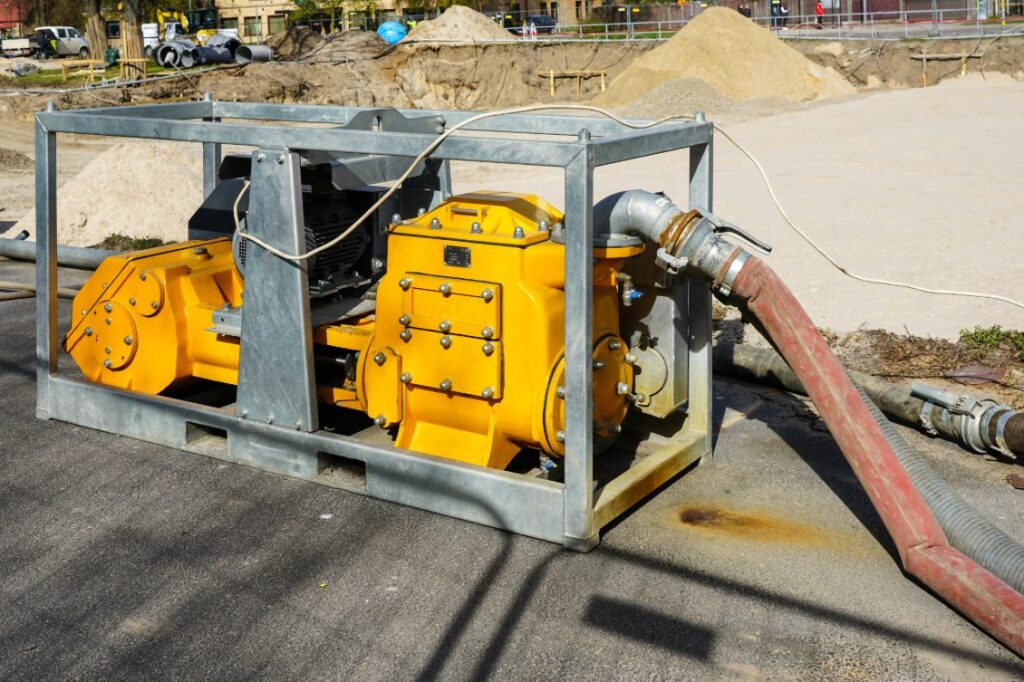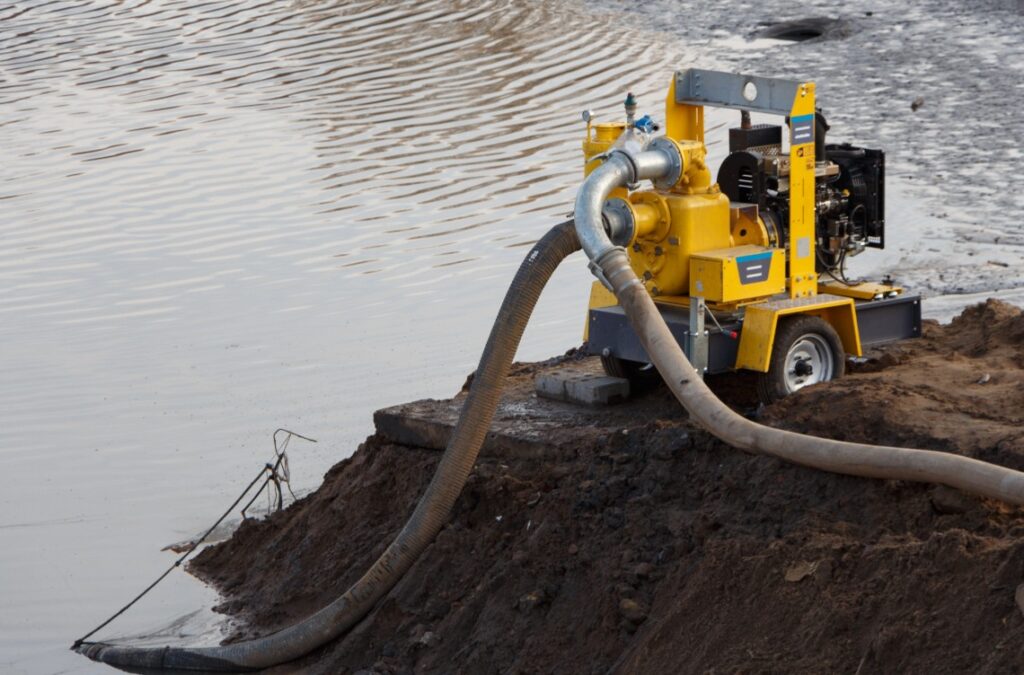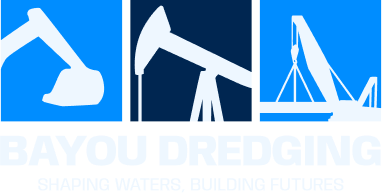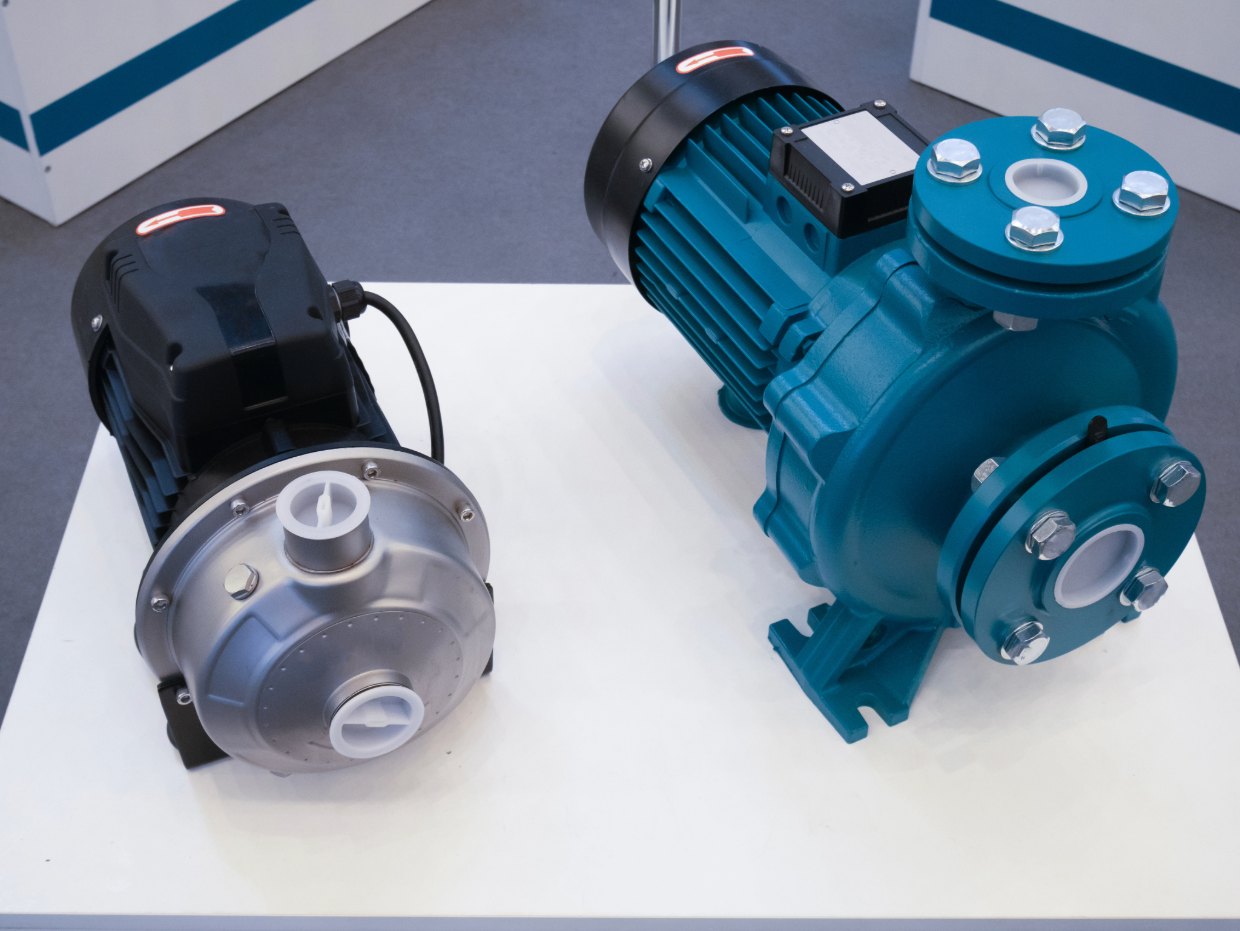Sludge pumping is a critical process in various industries, from municipal wastewater treatment to mining and industrial applications. The effectiveness of sludge pumps in harsh environments depends on their design, maintenance, and ability to handle the unique challenges of abrasive, corrosive, and high-solids content sludge. Choosing the right pumps for sludge and understanding their maintenance requirements is essential to ensuring reliable and efficient operation in demanding conditions.
What Makes Sludge Pumping Challenging?
Pumping sludge is one of the most demanding tasks in fluid handling due to the unique physical and chemical properties of the material involved. Unlike clean water or low-viscosity fluids, sludge presents several operational challenges that require purpose-built pumps for sludge designed for durability, efficiency, and reliability.
Sludge Characteristics That Complicate Pumping
- High Viscosity: Sludge often contains a thick, paste-like consistency, especially when it includes high concentrations of solids. This significantly increases resistance to flow and requires pumps with sufficient torque and power.
- High Solids Content: Many types of sludge—particularly in industrial, mining, and municipal applications—contain abrasive solids, fibrous material, or even large debris. Pumps not designed for solids handling can clog, wear prematurely, or fail outright.
- Corrosiveness: Sludge from chemical processing plants, wastewater treatment, or certain mining operations may contain highly corrosive compounds. This makes material selection critical when choosing sludge pumps for sale.
- Abrasiveness: In addition to being corrosive, many sludges contain sand, grit, or other abrasive particles. Over time, these can erode impellers, volutes, and seals, especially in inadequately protected systems.
Environmental and Operational Conditions
- High Temperatures: Sludge pumping in industrial or geothermal settings may involve elevated temperatures that can degrade seals and compromise pump performance if not properly engineered.
- Confined or Submerged Spaces: Many sludge pumping jobs require equipment to operate in pits, tanks, or sumps. This is where submersible sludge pumps offer significant advantages, as they can work directly within the slurry without the need for priming or extensive piping.
- Continuous Duty Cycles: Sludge pumps are often expected to run for extended periods without interruption. This level of demand puts added stress on mechanical components and highlights the need for robust construction and easy maintenance.
Core Types of Pumps for Sludge Applications

When selecting pumps for sludge, it is essential to choose a pump type that matches the specific conditions and characteristics of the sludge to be handled. Various types of pumps are designed to manage the challenges of sludge pumping, and each has its unique features, advantages, and limitations. Below are the core types of pumps used for sludge applications:
Centrifugal Sludge Pumps
- Working Principle: Centrifugal pumps use a rotating impeller to add kinetic energy to the sludge, which is then converted into flow. This type of pump is widely used for low to medium-viscosity sludge.
- Suitable Sludge Types: Ideal for handling sludge with moderate solid content, including municipal wastewater and industrial effluent with low to medium viscosity.
Positive Displacement Pumps
- Gear, Piston, and Diaphragm Types: Positive displacement pumps operate by trapping a fixed volume of sludge and forcing it into the discharge pipe, making them suitable for high-pressure applications.
- Applications and Pressure Handling: These pumps are excellent for transferring thick, viscous sludge with high solids content, where precise flow control is necessary. They are commonly used in industries like chemical processing and mining.
Submersible Sludge Pumps
- Role in Submerged and Confined Environments: Submersible sludge pumps are designed to operate underwater or in confined spaces that are inaccessible to other pump types. These pumps are lowered directly into the sludge tank or pit, which eliminates the need for priming and reduces the risk of airlocks.
- Key Performance Features: They are known for their robust construction, capable of withstanding harsh conditions. Key features include corrosion-resistant materials, built-in cooling systems, and solid handling capabilities.
Peristaltic (Hose) Pumps
- Best for High-Viscosity, Shear-Sensitive Sludge: Peristaltic pumps are well-suited for handling highly viscous, shear-sensitive sludge, as they work by squeezing a hose to move the material, minimizing damage to delicate particles.
- Low Maintenance, Dry-Run Capability: One of the key advantages is their ability to run dry without damaging the pump, making them ideal for applications where other pumps may risk failure due to a lack of fluid.
Air-Operated Diaphragm (AOD) Pumps
- Pneumatic Operation for Explosive or Remote Environments: AOD pumps are powered by compressed air, making them ideal for environments where electricity could be hazardous, such as in explosive or remote locations.
- Versatile, Portable, but Limited Flow Rates: These pumps are portable, easy to maintain, and can be used in a variety of sludge applications, though they are typically used for smaller flow rates.
Performance of Top Pump Types in Harsh Conditions
| Pump Type | Best For | Max Solids Handling | Maintenance Frequency | Energy Efficiency | Harsh Condition Tolerance |
| Centrifugal | Medium to low-viscosity sludge | Moderate | Moderate | High | Moderate |
| Submersible | Confined, underwater environments | High | Low | Moderate | High |
| Positive Displacement | High-viscosity, abrasive sludge | Very High | High | Moderate | High |
| Peristaltic | Chemical sludge, precise dosing | Medium | Low | Low | High |
| AOD | Portable & explosive environments | Low to Medium | Low | Low | Moderate |
Factors to Consider When Selecting Pumps for Sludge

Selecting the right pumps for sludge involves several key factors that directly impact pump performance, maintenance, and overall project success. Each factor must align with the specific needs of the sludge being pumped, as well as the operating environment. Below are the most important factors to consider when choosing a pump for sludge applications:
1. Material Compatibility (Corrosive or Abrasive Sludge)
Sludge often contains materials that can be either highly corrosive or abrasive, which will directly influence the materials used in the construction of the pump. For corrosive sludge, pumps made from stainless steel, coated materials, or other corrosion-resistant alloys are necessary to prevent rapid wear. Similarly, abrasive sludge with high solid content will require durable components like hardened impellers or rubber linings to withstand the abrasive particles. Choosing the right material ensures the pump operates efficiently and lasts longer, reducing maintenance costs and downtime.
2. Solids Content and Particle Size
Sludge can vary significantly in terms of solid content, ranging from low-solids wastewater to thick, gritty, and heavily contaminated sludge. Pumps for sludge with higher solids content (e.g., mining or construction sludge) need to have larger clearances to accommodate larger particles. Submersible sludge pumps and positive displacement pumps are typically preferred in these cases as they can handle larger solids effectively, reducing clogging and minimizing maintenance. Understanding the particle size and solids content is essential to ensure the pump chosen can handle the sludge without risking blockages or failure.
3. Flow Rate and Head Requirements
The flow rate and head (the vertical distance the pump needs to move the sludge) are critical factors when selecting a pump. These specifications determine the power and capacity needed for the pump to function efficiently. Flow rates are typically measured in gallons per minute (GPM) or liters per second (L/s), while head refers to the total dynamic head (TDH), which includes the vertical lift and friction losses. It is essential to match the pump’s performance curves with the operational needs of the system to ensure efficient and reliable pumping.
4. Available Power Source (Electric, Diesel, Pneumatic)
The power source available on the job site is a crucial factor. Electric pumps are efficient and widely used in most industrial and municipal applications, but they may not be suitable for remote or explosive environments. In such cases, diesel-powered pumps or pneumatic air-operated diaphragm (AOD) pumps are preferred due to their portability and versatility. Diesel-powered pumps offer high power and can be used in locations where electricity is unavailable or impractical, while pneumatic pumps are ideal for hazardous or confined environments.
5. Space Constraints (Stationary vs Portable Setups)
Space limitations can significantly impact the choice between stationary and portable pump systems. In confined or temporary settings, portable sludge pumps for sale offer flexibility and ease of use. Portable units are ideal for smaller or intermittent projects, whereas stationary pumps are designed for long-term installations where continuous, high-capacity pumping is needed. Consideration of the available space, as well as how and where the pump will be deployed, is essential when determining the most suitable option.
6. Budget and Total Cost of Ownership (TCO)
The initial purchase price of a sludge pump is an obvious consideration, but the Total Cost of Ownership (TCO) is equally important. TCO includes the cost of maintenance, energy consumption, replacement parts, and downtime. While some pumps may have a lower initial cost, they may incur higher operating costs over time due to inefficiency or frequent maintenance. Evaluating TCO ensures a more accurate understanding of the long-term investment. When browsing sludge pumps for sale, it’s essential to account for both upfront costs and long-term operational expenses to maximize ROI and performance.
Submersible Sludge Pumps: Why They Dominate Harsh Environments
Submersible sludge pumps are engineered to operate directly within sludge, making them ideal for submerged and confined environments. These pumps are essential for handling the harshest sludge pumping applications where traditional pumps cannot function efficiently. Whether it’s municipal wastewater, mining pits, or industrial sumps, submersible sludge pumps provide a reliable and efficient solution for managing thick, abrasive, and corrosive sludge.
Design Advantages in Submerged Operations
The key design advantage of submersible sludge pumps is their ability to operate completely submerged, making them perfect for confined spaces such as sumps, pits, or tanks. The pump is fully encapsulated, preventing air intake and eliminating the need for priming, which is often required in other pump types. This makes submersible sludge pumps ideal for operations where space is limited and accessibility is challenging. Their ability to function underwater also ensures continuous operation, even when conditions like fluctuating water levels or irregular sediment volumes are present.
Reduced Cavitation and Self-Priming Benefits
One of the major benefits of submersible sludge pumps is their ability to operate with reduced cavitation risk. Cavitation occurs when there is insufficient pressure in the pump, leading to the formation of air bubbles that can damage components over time. Because submersible sludge pumps are designed to be submerged, the pressure is maintained at the correct level, minimizing the risk of cavitation. Additionally, these pumps are inherently self-priming, meaning they can start without the need for external priming pumps or elaborate suction systems, making them highly convenient for continuous operations in harsh environments.
Applications: Municipal Wastewater, Mining Pits, and Industrial Sumps
Submersible sludge pumps excel in a variety of demanding applications, including:
- Municipal Wastewater: These pumps are commonly used in sewage treatment plants to handle thick and debris-laden wastewater. They help in transferring sludge from treatment basins to dewatering equipment.
- Mining Pits: In mining operations, submersible sludge pumps efficiently pump slurry, mud, and water mixed with high concentrations of solid particles. Their robust construction allows them to withstand abrasive and corrosive materials often found in mining environments.
- Industrial Sumps: For industrial facilities, submersible sludge pumps are essential in managing sludge and wastewater from manufacturing processes, helping to keep sumps clear of accumulated solids.
Key Specs to Look for in Submersible Sludge Pumps
When selecting submersible sludge pumps for demanding environments, here are the key specifications to consider:
- Seals: The seals in submersible sludge pumps are critical for preventing leakage and ensuring the longevity of the pump. Look for pumps with mechanical seals made from durable materials like ceramic or tungsten carbide for maximum resistance to wear and corrosion.
- Impeller Design: The impeller is responsible for moving the sludge through the pump. Choose pumps with vortex impellers or open-channel impellers, as they are specifically designed to handle high solids content and reduce the risk of clogging.
- Motor Rating: Ensure that the motor is powerful enough to handle the desired flow rates and head. Look for high-efficiency motors that can operate at lower power consumption while providing consistent performance. A motor with a higher power rating will help the pump handle thicker sludges and heavier solids without overloading.
Tips for Maintenance in Harsh Conditions
Proper maintenance is crucial for ensuring the longevity and optimal performance of submersible sludge pumps in harsh environments. Here are a few tips:
- Regular Inspection: Inspect seals, impellers, and motors regularly for wear and damage. Pay special attention to any buildup of solids or debris around the pump’s intake.
- Clean the Pump: In applications with abrasive sludge, regularly clean the pump’s internal components to prevent clogging and sediment accumulation. This helps maintain the efficiency of the pump over time.
- Monitor Operating Conditions: Keep an eye on operating conditions such as flow rate, pressure, and temperature. This helps identify any deviations early, which can prevent more significant problems from developing.
- Lubrication: Ensure the pump’s bearings and other moving parts are properly lubricated according to manufacturer guidelines. Lack of lubrication can cause unnecessary wear and failure.
Common Mistakes in Sludge Pump Selection

Selecting the right pumps for sludge is critical to ensuring efficient and reliable operations. However, several common mistakes can lead to pump inefficiency, frequent breakdowns, and increased operational costs. Below are the key mistakes to avoid when choosing a sludge pump for your application:
1. Oversizing or Undersizing the Pump
One of the most common mistakes in sludge pump selection is either oversizing or undersizing the pump for the intended application.
- Oversizing a pump can lead to increased energy consumption and unnecessary wear on components, as the pump will be operating far below its optimal efficiency point. This can also cause excessive turbulence in the sludge, leading to erosion and damage to the pump.
- Undersizing the pump, on the other hand, can result in inadequate flow and pressure, causing the pump to overwork and fail prematurely. In sludge applications, this can also lead to clogging and inefficient solids handling.
It is crucial to properly match the pump size to the specific flow rate, head requirements, and sludge characteristics to avoid these issues.
2. Ignoring Solids Content
Sludge can vary significantly in terms of solids content, from relatively clean wastewater to highly abrasive or thick sludge. Ignoring the solids content when selecting a pump is a serious oversight.
- High solids content sludge requires pumps that are specifically designed to handle larger particles, such as positive displacement pumps or submersible sludge pumps with reinforced impellers.
- Low solids content sludge, on the other hand, can be handled by standard centrifugal pumps without the risk of clogging.
Choosing a pump without fully understanding the solids content can lead to clogging, reduced efficiency, and increased wear on pump components.
3. Choosing the Wrong Impeller or Seal Type
The impeller and seal type in a sludge pump play crucial roles in its performance and longevity. Selecting the wrong type for the application can cause operational issues:
- Impeller Design: For sludges with high solids content or abrasiveness, it is important to choose pumps with vortex impellers or open impellers, which allow larger particles to pass through without causing blockages.
- Seal Type: Seals are vital for preventing leaks and ensuring pump durability. Mechanical seals made from corrosion-resistant materials such as ceramic or tungsten carbide are ideal for abrasive or corrosive sludge. Choosing cheaper or inadequate seals can lead to frequent failures and maintenance downtime.
4. Neglecting Ease of Maintenance and Repairability
The long-term reliability of sludge pumps depends heavily on their ease of maintenance and repair. Selecting pumps that are difficult to maintain or repair can lead to extended downtime and costly repairs in the future.
- Modular Design: Choose pumps with easily replaceable parts, such as seals, bearings, and impellers, to simplify maintenance procedures.
- Accessibility: Pumps located in confined or hard-to-reach spaces should have accessible components for quick inspection and repairs.
5. Overlooking Operating Cost vs Initial Cost
When selecting pumps for sludge, it’s easy to focus primarily on the initial purchase price and overlook the total operating cost. While a low-cost pump may seem like a good deal, its long-term operating costs can far exceed the initial savings.
- Energy Consumption: Pumps that are oversized or inefficient will consume more power, increasing your energy bills over time.
- Maintenance and Replacement Parts: Inexpensive pumps may have higher maintenance costs due to lower-quality materials or complex designs that require frequent servicing.
Maintenance and Durability: What to Expect in the Field
Sludge pumps, especially those used in harsh environments, endure considerable wear and tear. Proper maintenance is key to ensuring their reliability, longevity, and optimal performance. Below, we explore the importance of preventive maintenance, common components subject to wear, recommended maintenance schedules, and the benefits of selecting pumps with modular or field-serviceable designs.
Importance of Preventive Maintenance in Harsh Conditions
In demanding sludge pumping applications, such as those in mining, wastewater treatment, and industrial operations, preventive maintenance plays a crucial role in minimizing downtime and maximizing pump efficiency. Regularly scheduled maintenance ensures that potential issues are addressed before they become major failures. Preventive measures, such as routine inspections, cleaning, and lubrication, help identify wear and tear on critical pump components, reducing the likelihood of unexpected breakdowns and costly repairs.
In harsh environments, where sludge can be abrasive, corrosive, and high in solids content, the risk of component failure increases significantly. Preventive maintenance helps to catch early signs of deterioration, extend the lifespan of the pump, and reduce the overall total cost of ownership (TCO).
Component Wear: Impellers, Liners, and Seals
Key components of pumps for sludge are particularly susceptible to wear in harsh operating conditions. These include:
- Impellers: The impeller is responsible for moving sludge through the pump. Over time, abrasive particles in the sludge can erode impellers, reducing efficiency and causing uneven wear. High-solids or abrasive sludges require pumps with heavy-duty impellers designed to resist wear. Regular inspections can help determine if the impeller needs to be repaired or replaced.
- Liners: Sludge pumps often feature liners that protect the inner surfaces of the pump from abrasion. As the pump handles abrasive or coarse sludge, the liners can wear down, compromising the pump’s performance. Replacing or repairing liners before they become too worn is essential to maintaining pump efficiency.
- Seals: Seals prevent leaks and ensure that the pump operates at optimal pressure. In sludge applications, seals are subjected to corrosive and abrasive conditions. Mechanical seals, made from materials like tungsten carbide, are highly effective, but they must be regularly checked for wear and replaced as needed to avoid leakage and premature failure.
Recommended Maintenance Schedules by Pump Type
The frequency and type of maintenance required can vary depending on the type of sludge pump and the nature of the application. Below are general guidelines for maintenance schedules based on pump type:
- Centrifugal Sludge Pumps:
- Frequency: Monthly to quarterly inspections
- Tasks: Check impeller for wear, clean and lubricate bearings, inspect seals and mechanical components, and verify proper alignment and operation.
- Frequency: Monthly to quarterly inspections
- Positive Displacement Pumps:
- Frequency: Monthly inspections, with more in-depth maintenance every 6 months
- Tasks: Inspect valves, check for any unusual pressure fluctuations, lubricate moving parts, and replace worn gaskets or seals.
- Frequency: Monthly inspections, with more in-depth maintenance every 6 months
- Submersible Sludge Pumps:
- Frequency: Quarterly inspections, with an emphasis on seals and impeller checks
- Tasks: Ensure the motor is functioning properly, inspect the electrical connections, check for any blockages or debris around the pump, and verify that the pump is operating without vibration or unusual noise.
- Frequency: Quarterly inspections, with an emphasis on seals and impeller checks
- Peristaltic Pumps:
- Frequency: Monthly checks, with more frequent inspections in high-use environments
- Tasks: Check hose condition, inspect for wear on the rollers, ensure the pump is running smoothly, and replace hoses as needed to maintain performance.
- Frequency: Monthly checks, with more frequent inspections in high-use environments
- Air-Operated Diaphragm Pumps:
- Frequency: Monthly inspections
- Tasks: Inspect the diaphragm for wear, check for air leaks, lubricate moving parts, and ensure that all components are properly sealed.
- Frequency: Monthly inspections
Choosing Pumps with Modular or Field-Serviceable Designs
In challenging sludge pumping applications, pumps with modular or field-serviceable designs are particularly advantageous. These designs allow for easier repair, replacement, and maintenance, often minimizing downtime and reducing service costs. Benefits include:
- Ease of Access: Modular pumps are designed so that individual components, such as impellers, seals, and liners, can be easily removed and replaced. This makes it possible to perform repairs quickly and efficiently in the field, without needing to transport the entire pump for servicing.
- Cost Savings: Field-serviceable pumps can reduce costly downtime and minimize the need for replacement parts by allowing repairs and maintenance to be done on-site. This can significantly lower operational costs, especially in industries where pump downtime can lead to production delays.
- Flexibility: Modular designs often come with interchangeable parts, meaning that pumps can be adapted or upgraded based on the needs of the application. Whether handling different sludge types or dealing with changes in operating conditions, modular pumps offer the flexibility to tailor the pump for optimal performance.
Matching the Right Pump to the Right Challenge
In conclusion, selecting the appropriate sludge pump for your specific needs is crucial to optimizing efficiency and minimizing downtime. By focusing on key factors such as solids content, pump type, and regular preventive maintenance, operators can significantly extend the lifespan of their equipment while reducing operational costs. For reliable and high-performance sludge pumps, consider exploring the range of solutions offered by Bayou Dredging. Visit Bayou Dredging to discover more about our durable and efficient sludge pumping solutions designed for harsh environments.



